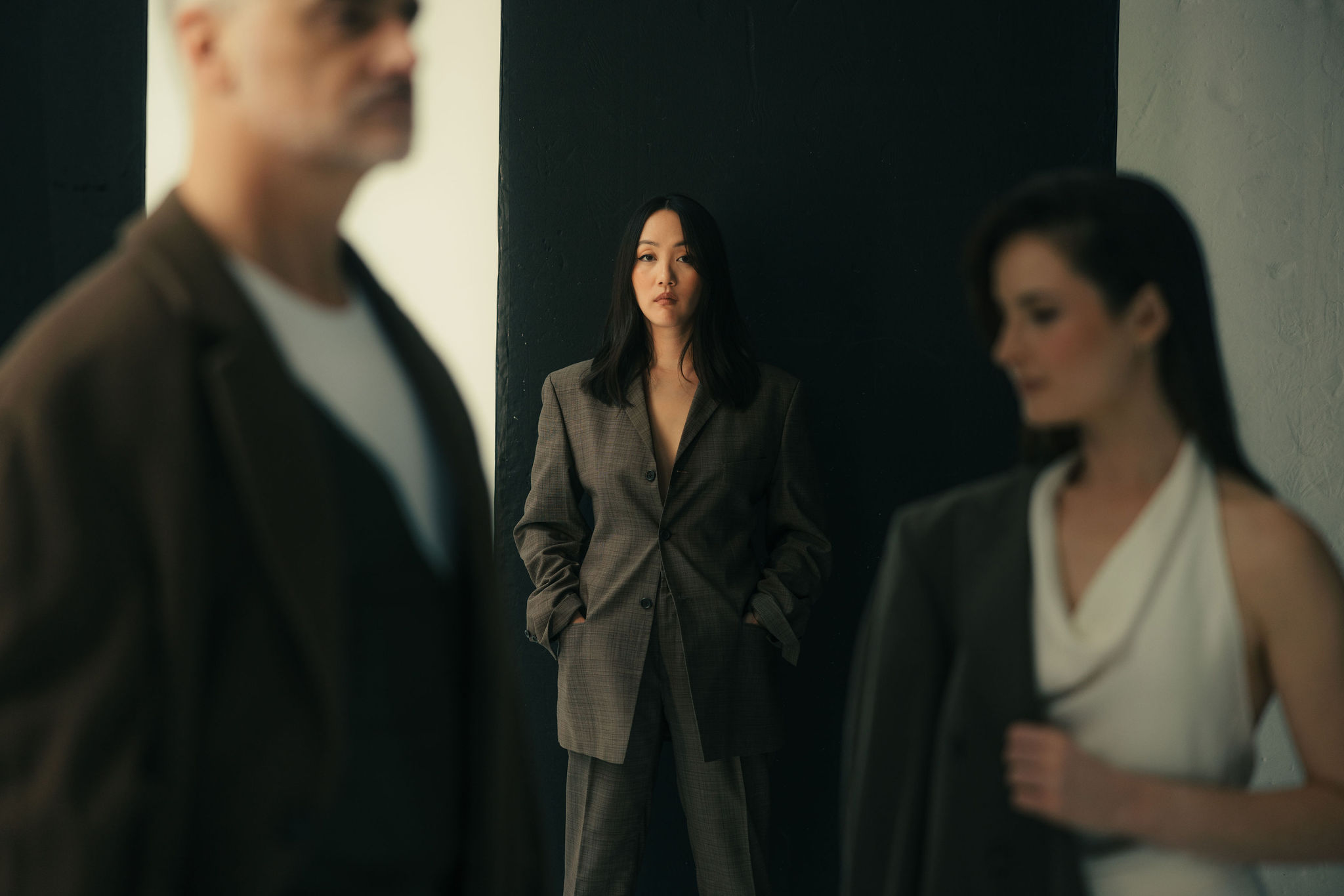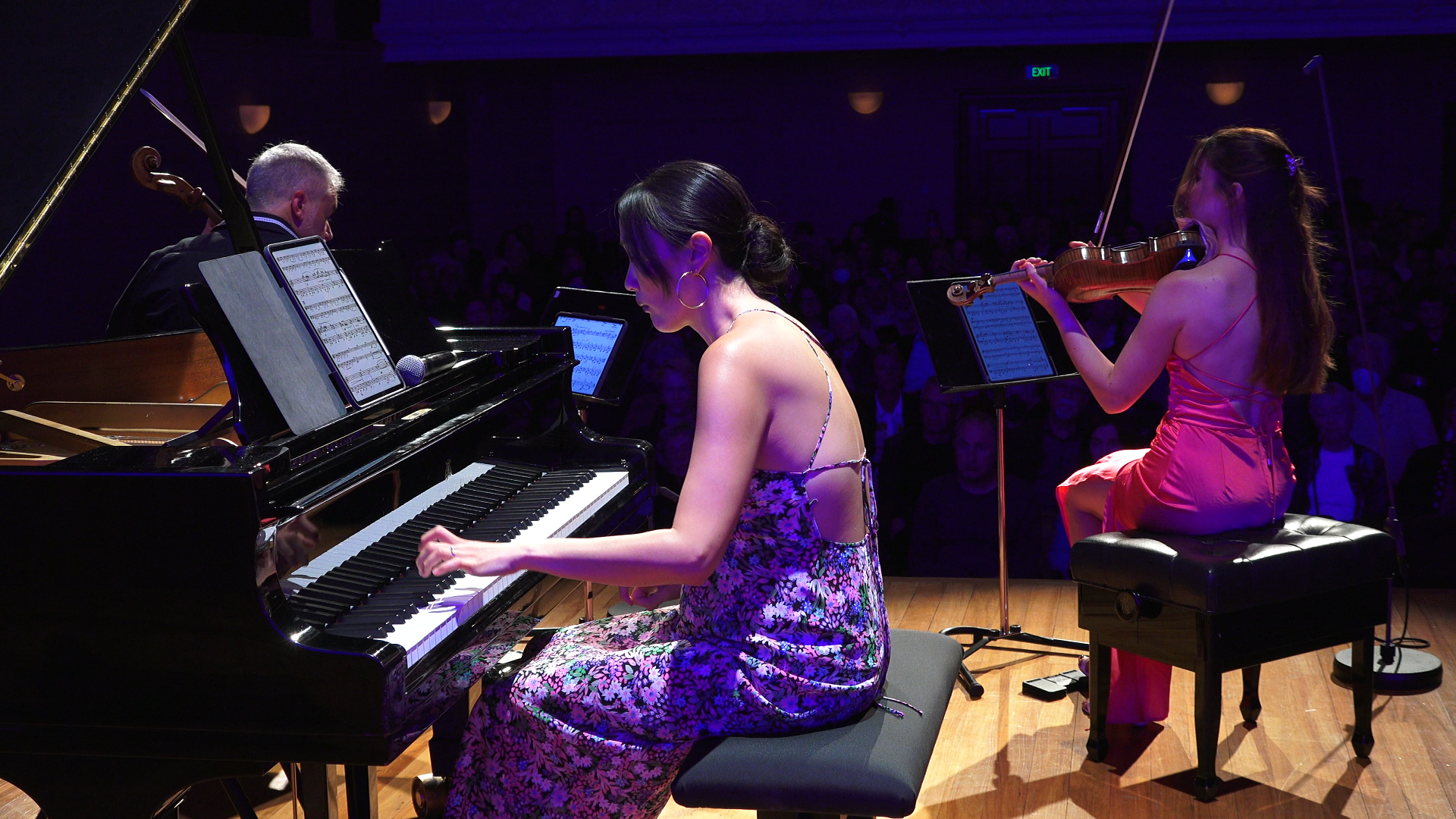Constellations
10dec7:00 pmConstellationsMairangi Arts Centre - Auckland
Event Details
Join us on the North Shore in the intimate gallery setting at Mairangi Arts Centre for the third and final concert in our 2020 Home Series: Constellations. Beethoven: Piano Trio No.
Event Details
Join us on the North Shore in the intimate gallery setting at Mairangi Arts Centre for the third and final concert in our 2020 Home Series: Constellations.
Beethoven: Piano Trio No. 1 (1st mvt)
Saariaho: Light and Matter
Margetić: Lightbox
Korngold: Piano Trio (1st mvt)
As the date of Beethoven’s 250th birthday approaches, we open this concert where it all began: his seminal Opus 1 No 1. Then our focus fans out to the Finnish-German-French influence in Kaija Saariaho’s spectral masterpiece Light and Matter. Staying in the brightest light, we experience the delightful return of the prizewinning Lightbox by New Zealander Karlo Margetić. The light then projects onto the silver screen in the Piano Trio by Erich Korngold, a work that bears all the hallmarks of his Austro-Hungarian upbringing, WW2-era immigration into America and film-music career.
Adults $40 / Students $20
Duration: Approx. 1 hour no interval, followed by complimentary refreshments.
Full 2 hour version at the Auckland Town Hall, Concert Chamber Dec. 11, 8pm (special $35 ticket for those who attend both. Please email manager@nztrio.com for details).
Click here for wheelchair accessibility and other special requirements.
Time
December 10, 2020 7:00 pm UTC+12:00(GMT-11:00)
Location
Mairangi Arts Centre
Programme Notes
Constellations Beethoven Piano Trio No. 1 Saariaho Light and Matter Margetić Lightbox Korngold Piano Trio Ludwig van Beethoven (1770-1827): Piano Trio No. 1 in E flat. Op.1 no 1, c. 31’ Allegro Adagio cantabile Scherzo. Allegro assai Finale. Presto This is Beethoven arriving at his destiny, in Vienna. Bonn was at last behind him – his punishing childhood (he would be dragged out of bed for lessons in the night), his alcoholic father, his responsibility as head of the household. His mother had died in 1787 – curtailing his first attempt to move to Vienna, when he certainly met Mozart – and his father had just been forcibly retired from court, leaving Beethoven the sole provider on his orchestra salary (viola) and the piano lessons he gave on the side. It was supplemented by his father’s pension – half was paid to him so he wouldn’t drink it away. But it wasn’t all bad! Beethoven made important connections in Bonn. Haydn passed through on the way to London: he attracted the attention of aristocratic patrons including Count Waldstein, who remianed a friend for life; and he began to compose, under the tutelage of his first teacher, Christian Neefe. So when he left for Vienna this second time, off to study with Haydn proper, he was armed not only with letters of introduction to the finest families but also the sketches to his first ever piano trio – this. Not that he published it immediately. He waited until he had three, perfect piano trios to make the maximum splash and succeeded, of course – always a very savvy self-promoter, Beethoven. And he put this, bold in every direction including its four-movement length, at the start. It starts off so charming. But then immediately Beethoven begins playing with the harmony, and ratchets up the complexity and energy continually in a way that shows his already astonishing sophistication. The slow movement is the first of those classic Beethoven adagios, simple and serene, ending as it began; the short scherzo (and lyrical trio counterpart) is a true joke, full of surprises (those piano dissonances, the rhythm!); and the flashing finale with its boldly extended coda is vaguely reminiscent of Haydn’s Gypsy trio – except that Beethoven wrote this first. “I never learned anything from Haydn”, he claimed, outrageously. But listen to this trio and you may be persuaded that he was right. Kaija Saariaho (FIN; b. 1952): Light and Matter, c. 14’ “Time is light: the light indicates the time, gives the rhythm, influences nature. I’ve always needed daylight when I work. I can’t compose at night. For me, each instrument’s sound has a different intensity of light. The whiter the light, the purer the spectrum.” Kaija Saariaho, called by the BBC the greatest living composer (2019), discovered spectralism in the 1980s – the French technique of employing the infinite harmonics of the sound spectrum – and developing it further to create a music that shifts between textures and colours, weightless, like curtains of light. The three instruments of this trio pass the textures between them before collecting at the end on the note C – the pitch where it began. Saariaho writes: “I composed this piece in New York when we lived next to the Morningside Park. I could see the park during the whole day, from sunrise until sunset, and that change of light modified constantly the park: the trunks changed colors, the shadows moved and reshaped the landscape. And I had these images in front of me from fall to spring. All that inspired me to compose Light and Matter so that I have very reduced musical material that is then varied constantly in different ways. “ Credit: Anne Leilehua Lanzilotti Karlo Margetić (NZ; b. 1987): Lightbox, c. 12’ Karlo Margetić holds degrees in composition and clarinet from the New Zealand School of Music. He has been the recipient of numerous prizes in composition, and has received commissions and performances from NZTrio, Duo Solaris, Saxcess, the APO, and the NZSO National Youth Orchestra. The composer writes: “When I think of a piano trio, I immediately think of a transparent interplay of lines. This has something to do with the fact that the instruments that make up the modern piano trio are not particularly homogeneous, unlike say, a string quartet. It’s as if somebody had strewn some line drawings of simple three dimensional objects on a photographer’s lightbox, all on top of one another, resulting in an unexpected and strangely beautiful assemblage.” Lightbox was commissioned by NZTrio in 2012, with funding from Creative NZ. Erich Korngold (1897-1957): Piano Trio in D major, Op. 1, c. 28’ Allegro non troppo, con espressione Scherzo. Allegro – Trio. Viel langsamer, innig Larghetto. Sehr langsam Finale. Allegro molto e energico This does not sound like the work of a child! And that’s exactly what they said at the time in Vienna. Everyone, but everyone, was astonished by Korngold. Puccini said he had twice as much talent as he needed: Gustav Mahler shook his head in wonder and said “a genius, a genius”; Richard Strauss spoke of “awe and concern .. This assurance of style, this mastery of form, this characteristic expressiveness, this bold harmony, are truly astonishing.” But then, this was the greatest prodigy of the 20th century, whose meteoric early career in Europe has been somewhat eclipsed by his later film success in Hollywood. Much was still to come: international fame with Die Tote Stadt at the age of 23; at 33, voted Austria’s greatest living composer; a year later appointed the youngest-ever professor of music in Vienna. Then upheaval, of course – the rise of the Third Reich and having to flee Europe, never to return. But in 1910, this was a 12-year-old boy who had been able to reproduce anything on the piano since the age of five. At seven, he began composing original music. At nine, he astonished Mahler with his first cantata. At eleven, while he was writing this trio, his first ballet The Snowman was finishing a sensational first season at the Vienna Staatsoper. He also had the greatest pianist in Europe, Artur Schnabel, touring his piano sonata no 2; and he was completing his first two operas, both premiered the following year. This trio premiered in Munich one month shy of Korngold’s 13th birthday, and was in New York within the month. It has an extraordinary boldness and freshness, evoking that lush, slightly decadent soundworld of Vienna before the war. You can hear Korngold’s lyrical gift throughout, beginning with that lovely, watery piano opening. The first movement is an exploration of contrasts: bursts of energy contrasted with an almost ecstatic stillness. A mischievous, brilliant scherzo surrounds a trio that sounds like a sultry cabaret song. The strings shine in the slow movement (pizzicato surprise!), leading into a brilliant finale that is part angular and modern, part nostalgic love-duet, and while it somewhat resembles Richard Strauss it goes far beyond what Strauss was writing at the time. Korngold dedicated it to “Meinem lieben Papa”, my dear Papa, and was pleased enough to finally assign an opus 1. Age 12. Programme notes by Charlotte Wilson (unless otherwise stated)


